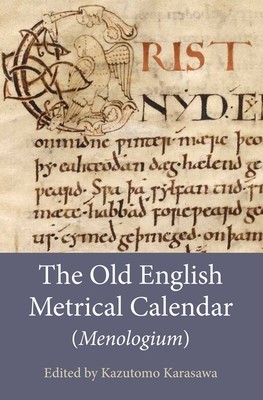
- We will send in 10–14 business days.
- Publisher: Boydell & Brewer
- ISBN-10: 1843845997
- ISBN-13: 9781843845997
- Format: 15 x 3.3 x 1.3 cm, minkšti viršeliai
- Language: English
- SAVE -10% with code: EXTRA
The Old English Metrical Calendar (Menologium) (e-book) (used book) | bookbook.eu
Reviews
Description
First modern text and English translation of an important Anglo-Saxon poem dealing with the liturgical year.
WINNER of the International Society of Anglo-Saxonists 2017 Publication Prize: Best Edition The late tenth-century Old English Metrical Calendar (traditionally known as Menologium) summarises, in the characteristicheroic diction and traditional metre of Old English poetry, the major course of the Anglo-Saxon liturgical year. It sets out, in a methodical structure based on the basic temporal framework of the solar/natural year, the locations of the major feasts widely observed in late Anglo-Saxon England. Such a work could have been a practical timepiece for reading the dates of the Anglo-Saxon Chronicle, for which it serves as a kind of prologue in the manuscript.The clearly domestic perspective of the poem, which fits in the manuscript context, is also noteworthy, while the poem also reveals various interesting characteristics in its grammar, vocabulary and prosody.This is the firstfull modern edition of the poem, and is accompanied by a facing translation. The introduction provides an extensive discussion of matter, content, style, and context, while the commentary offers further information. The volume also includes the texts and translations of a number of analogous works.
EXTRA 10 % discount with code: EXTRA
The promotion ends in 21d.23:27:09
The discount code is valid when purchasing from 10 €. Discounts do not stack.
- Publisher: Boydell & Brewer
- ISBN-10: 1843845997
- ISBN-13: 9781843845997
- Format: 15 x 3.3 x 1.3 cm, minkšti viršeliai
- Language: English English
First modern text and English translation of an important Anglo-Saxon poem dealing with the liturgical year.
WINNER of the International Society of Anglo-Saxonists 2017 Publication Prize: Best Edition The late tenth-century Old English Metrical Calendar (traditionally known as Menologium) summarises, in the characteristicheroic diction and traditional metre of Old English poetry, the major course of the Anglo-Saxon liturgical year. It sets out, in a methodical structure based on the basic temporal framework of the solar/natural year, the locations of the major feasts widely observed in late Anglo-Saxon England. Such a work could have been a practical timepiece for reading the dates of the Anglo-Saxon Chronicle, for which it serves as a kind of prologue in the manuscript.The clearly domestic perspective of the poem, which fits in the manuscript context, is also noteworthy, while the poem also reveals various interesting characteristics in its grammar, vocabulary and prosody.This is the firstfull modern edition of the poem, and is accompanied by a facing translation. The introduction provides an extensive discussion of matter, content, style, and context, while the commentary offers further information. The volume also includes the texts and translations of a number of analogous works.


Reviews